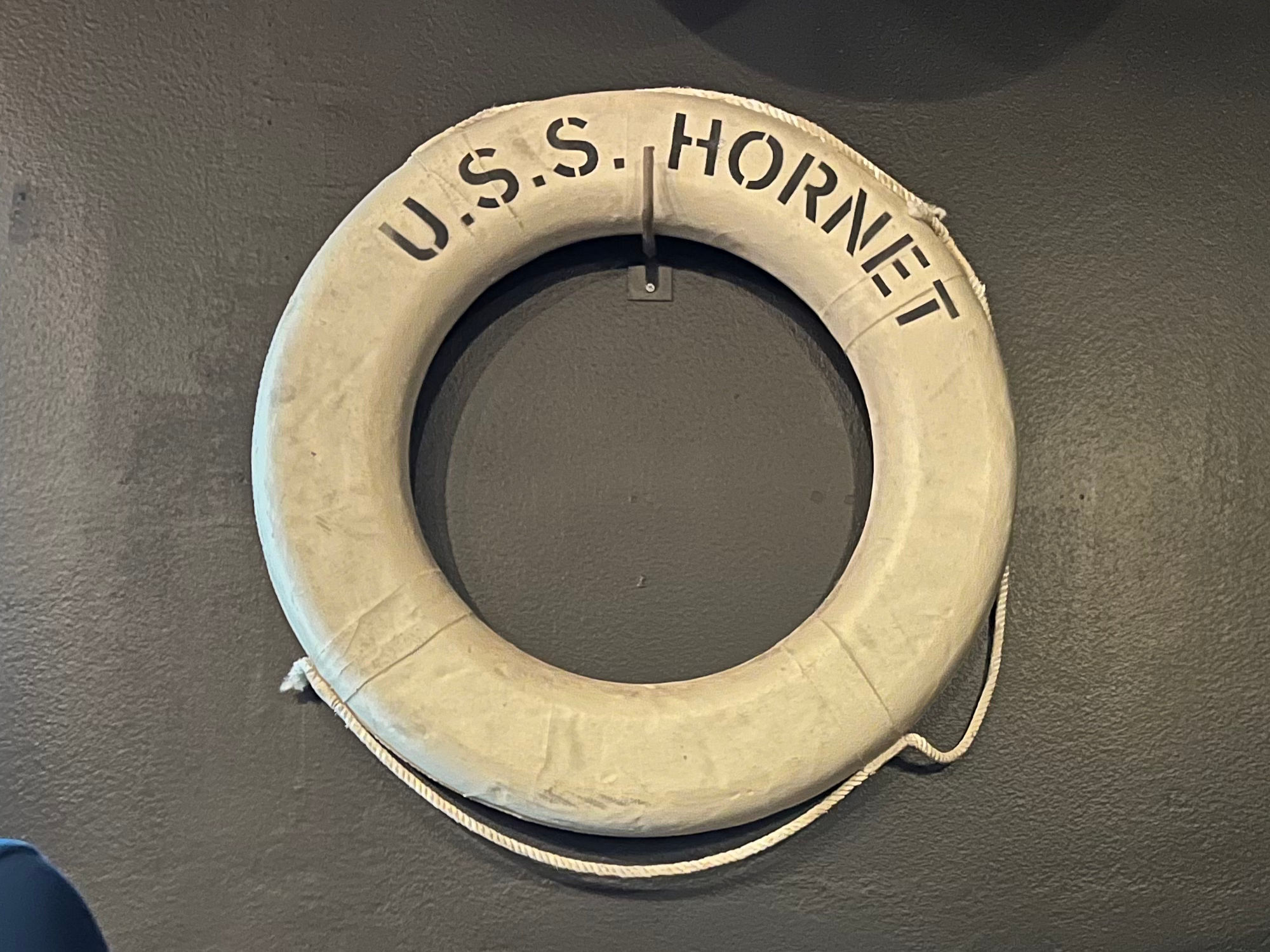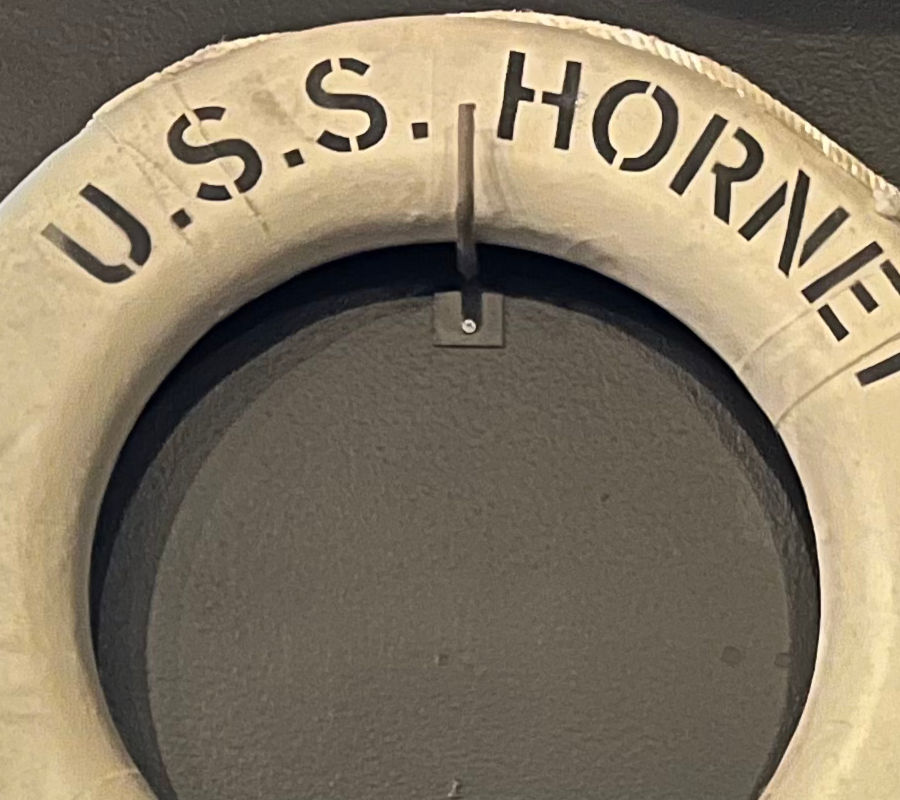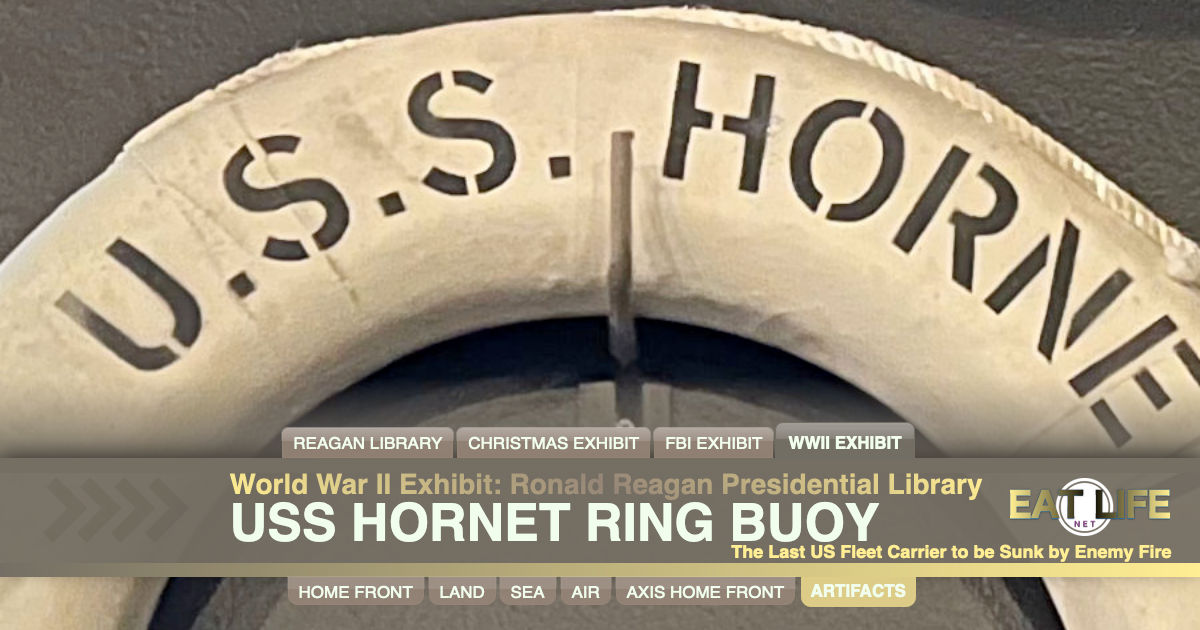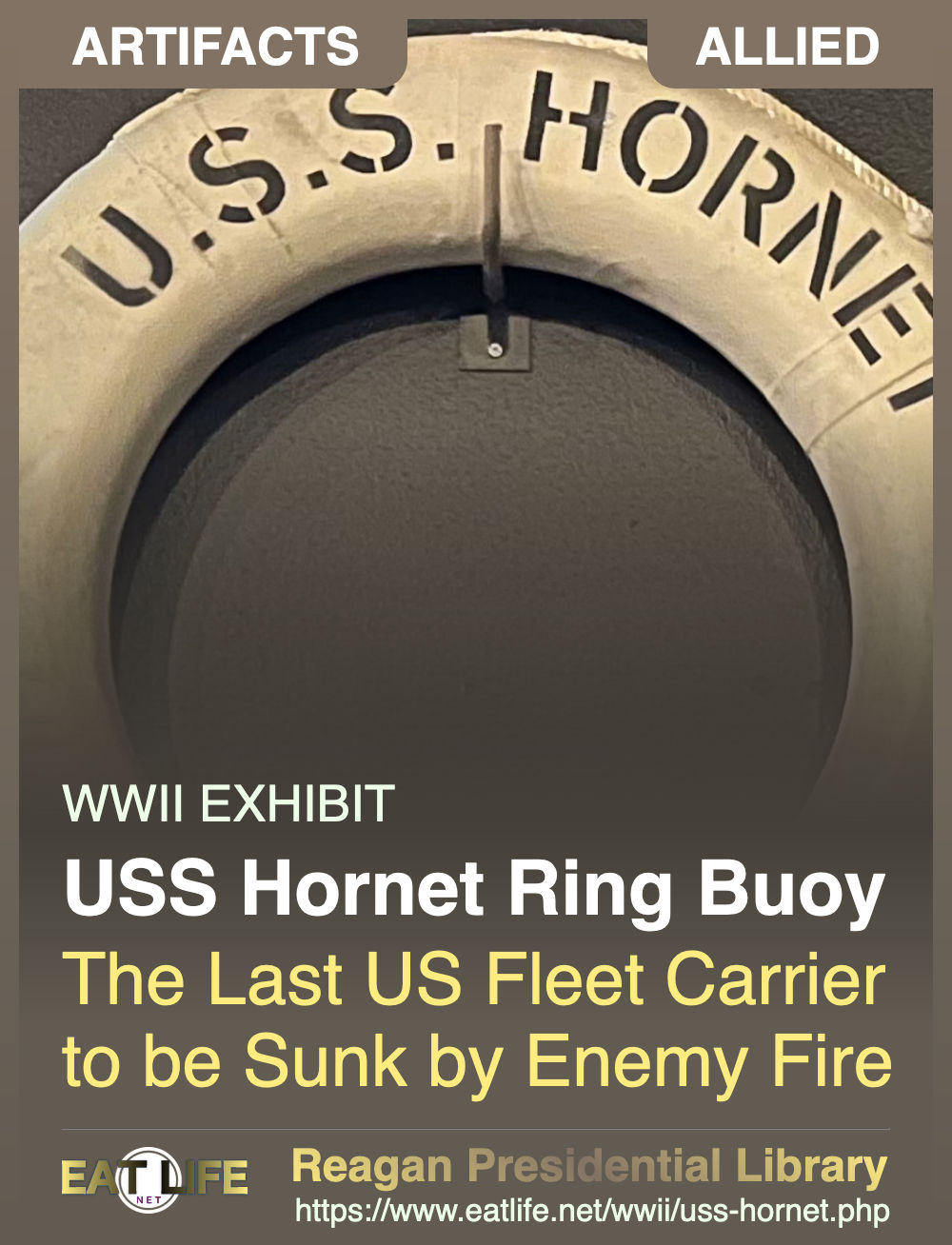
WIKIPEDIAUSS Hornet (CV-8)
US NAVY Yorktown Class Aircraft Carrier
During World War II in the Pacific Theater, she launched the Doolittle Raid on Tokyo and participated in the Battle of Midway and the Buin-Faisi-Tonolai raid. In the Solomon Islands campaign, she was involved in the capture and defense of Guadalcanal and the Battle of the Santa Cruz Islands, where she was irreparably damaged by enemy torpedo and dive bombers. Faced with an approaching Japanese surface force, Hornet was abandoned and later torpedoed and sunk by approaching Japanese destroyers. Hornet was in service for one year and six days, and was the last US fleet carrier ever sunk by enemy fire. For these actions, she was awarded four service stars and a citation for the Doolittle Raid in 1942, and her Torpedo Squadron 8 received a Presidential Unit Citation for extraordinary heroism for its performance at the Battle of Midway.Before the attack on Pearl Harbor, Hornet trained out of Norfolk. A hint of a future mission occurred on 2 February 1942 when Hornet departed Norfolk with two Army Air Forces B-25 Mitchell medium bombers on deck. Once at sea, the planes were launched to the surprise and amazement of Hornet's crew. Her men were unaware of the meaning of this experiment. Hornet returned to Norfolk, prepared to leave for combat, and sailed for the West Coast on 4 March via the Panama Canal.
- Doolittle Raid April 1942
- Battle of Midway June 1942
- Solomon Islands Campaign August–October, 1942
- Battle of the Santa Cruz Islands October, 1942
Battle of the Santa Cruz Islands
The Battle of the Santa Cruz Islands took place on 26 October 1942 without contact between surface ships of the opposing forces. That morning, Enterprise's planes bombed the carrier Zuiho, while planes from Hornet severely damaged the carrier Shokaku and the heavy cruiser Chikuma. Two other cruisers were also attacked by Hornet's aircraft. Meanwhile, Hornet was attacked by a coordinated dive bomber and torpedo plane attack. In a 15-minute period, Hornet was hit by three bombs from Aichi D3A "Val" dive bombers. One "Val", after being heavily damaged by antiaircraft fire while approaching Hornet, crashed into the carrier's island, killing seven men and spreading burning aviation gas over the deck. A flight of Nakajima B5N "Kate" torpedo bombers attacked Hornet and scored two hits, which seriously damaged the electrical systems and engines. As the carrier came to a halt, another damaged "Val" deliberately crashed into Hornet's port side near the bow.With power knocked out to her engines, Hornet was unable to launch or land aircraft, forcing her aviators to either land on Enterprise or ditch in the ocean. Rear Admiral George D. Murray ordered the heavy cruiser Northampton to tow Hornet clear of the action. Japanese aircraft were attacking Enterprise, allowing Northampton to tow Hornet at a speed of about five knots (6 mph). Repair crews were on the verge of restoring power when another flight of nine "Kate" torpedo planes attacked. Eight of these aircraft were either shot down or failed to score hits, but the ninth scored a fatal hit on the starboard side. The torpedo hit destroyed the repairs to the electrical system and caused a 14 list. After being informed that Japanese surface forces were approaching and that further towing efforts were futile, Vice Admiral William Halsey ordered Hornet sunk, and an order of "abandon ship" was issued. Captain Mason, the last man on board, climbed over the side, and the survivors were soon picked up by the escorting destroyers.
Hornet, Sinking and Abandoned
American warships attempted to scuttle the stricken carrier, which absorbed nine torpedoes, many of which failed to explode, and more than 400 5-inch rounds from the destroyers Mustin and Anderson. The destroyers steamed away when a Japanese surface force entered the area. The Japanese destroyers Makigumo and Akigumo finally finished off Hornet with 4 24-inch Long Lance torpedoes. At 01:35 on 27 October, Hornet finally sank with the loss of 140 of her 2,200 sailors. 21 aircraft went down with the ship.Legacy
Hornet was stricken from the Naval Vessel Register on 13 January 1943. Her name was revived less than a year later when the newly constructed Essex-class aircraft carrier Kearsarge was commissioned as USS Hornet (CV-12). CV-8 is honored aboard her namesake, which is now the USS Hornet Museum docked in Alameda, California.Hornet was the last American fleet carrier (CV) ever sunk by enemy fire, though the light carrier Princeton and a number of much smaller escort carriers were sunk in combat in other battles following Hornet's sinking.
In late January 2019, the research vessel Petrel located Hornet's wreck at more than 17,500 feet deep off the Solomon Islands. The carrier lies upright on the ocean floor, with her signal bridge and a section of her stern that broke away coming to rest around her.








